Why Authentic Polish Recipes Are Worth Your Time
An authentic Polish recipe is your gateway to centuries of culinary tradition. It’s a world of hearty ingredients like sauerkraut and kielbasa, time-tested techniques like fermentation and slow-simmering, and iconic dishes such as Pierogi, Bigos, and Gołąbki. These recipes are passed down through generations, deeply tied to holidays like Christmas Eve (Wigilia) and Fat Thursday.
Shaped by necessity due to Poland's turbulent history and harsh winters, the cuisine relies on long-lasting, nourishing dishes. This led to the prominence of pickled foods for preservation and fatty, hearty meals to sustain families. The time-intensive nature of many recipes reflects a culture that celebrates food and the patience required to perfect it.
Whether you're making pierogi from scratch or slow-cooking a pot of Bigos, Polish cooking rewards attention to detail with warm, comforting dishes that bring people together.
I'm Sylwester Skóra, and my journey with authentic Polish recipe traditions began in my grandmother's kitchen in Poland. I learned that great food starts with quality ingredients and respect for time-honored methods. At Two Flags Vodka, we carry this same commitment to authenticity, honoring Polish heritage while embracing the opportunities of America.
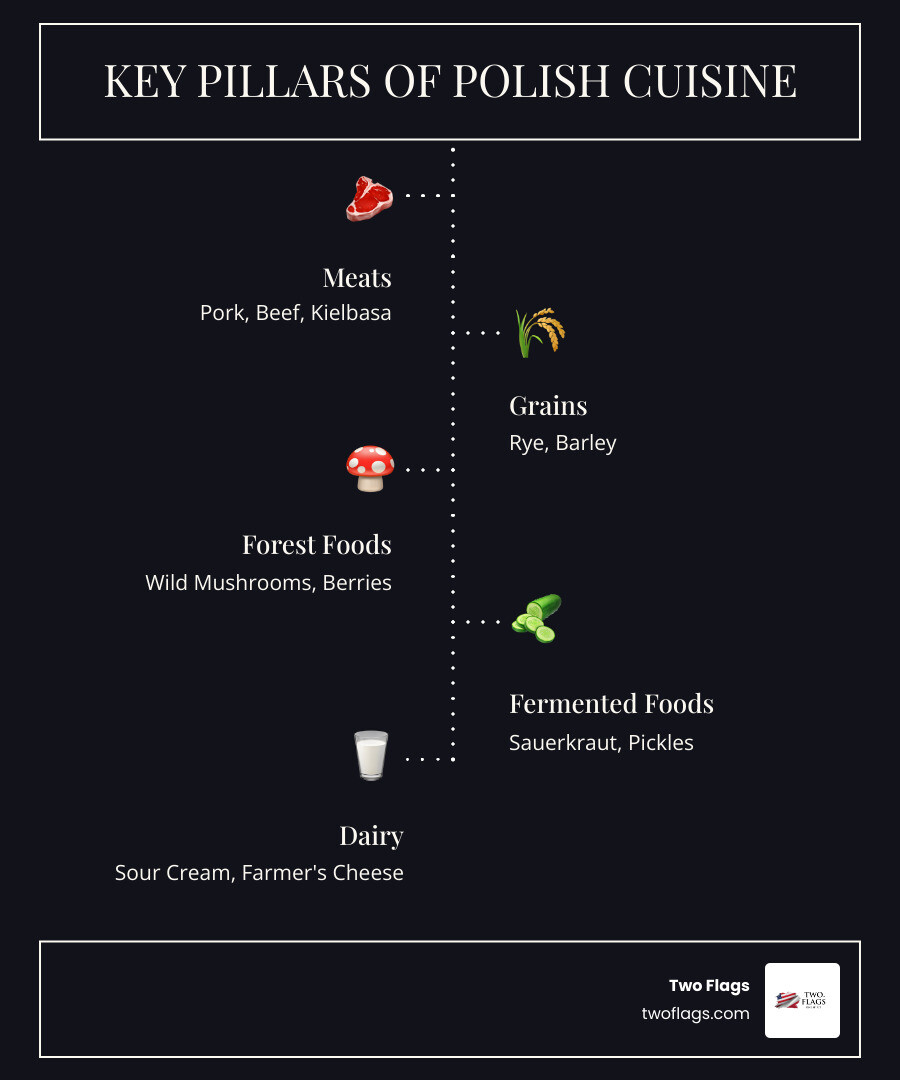
The Heart of the Polish Kitchen: History, Ingredients, and Techniques
Polish cooking was born from necessity, shaped by harsh winters and a tumultuous history. Food preservation was key to survival, making pickling a cornerstone technique. Tangy sauerkraut and crunchy pickled cucumbers kept families fed when fresh vegetables were scarce. This emphasis on hearty, fatty meals wasn't indulgence—it was a practical way to stay warm and nourished through the long, cold months.
An authentic Polish recipe for a stew like Bigos might simmer for days, with flavors deepening each time it's reheated. This patience is what makes the cuisine special. Poland’s culinary story also has many regional variations, reflecting the country's diverse landscape. A family in Kraków might prepare their pierogi slightly differently than one in Gdańsk, showcasing local traditions.
The Polish pantry is built on staples like cabbage (fresh and fermented as sauerkraut), smoky kielbasa, and versatile potatoes. Beets add earthy sweetness, while foraged wild mushrooms provide umami depth. Aromatic notes come from fresh dill and caraway seeds, while creamy sour cream and farmer's cheese balance tangy flavors in both savory and sweet dishes.
Core cooking techniques include slow-simmering to develop complex flavors, braising to tenderize meats, and the art of dumpling making, a skill passed down through generations. My grandmother’s hands knew the exact feel of properly rested dough, a testament to this living tradition.
Polish holiday traditions are inseparable from food. Christmas Eve (Wigilia) features a meatless feast of twelve symbolic dishes. Easter brings blessed breads and egg dishes, while Fat Thursday (Tłusty Czwartek) is a nationwide celebration of pączki before Lent.
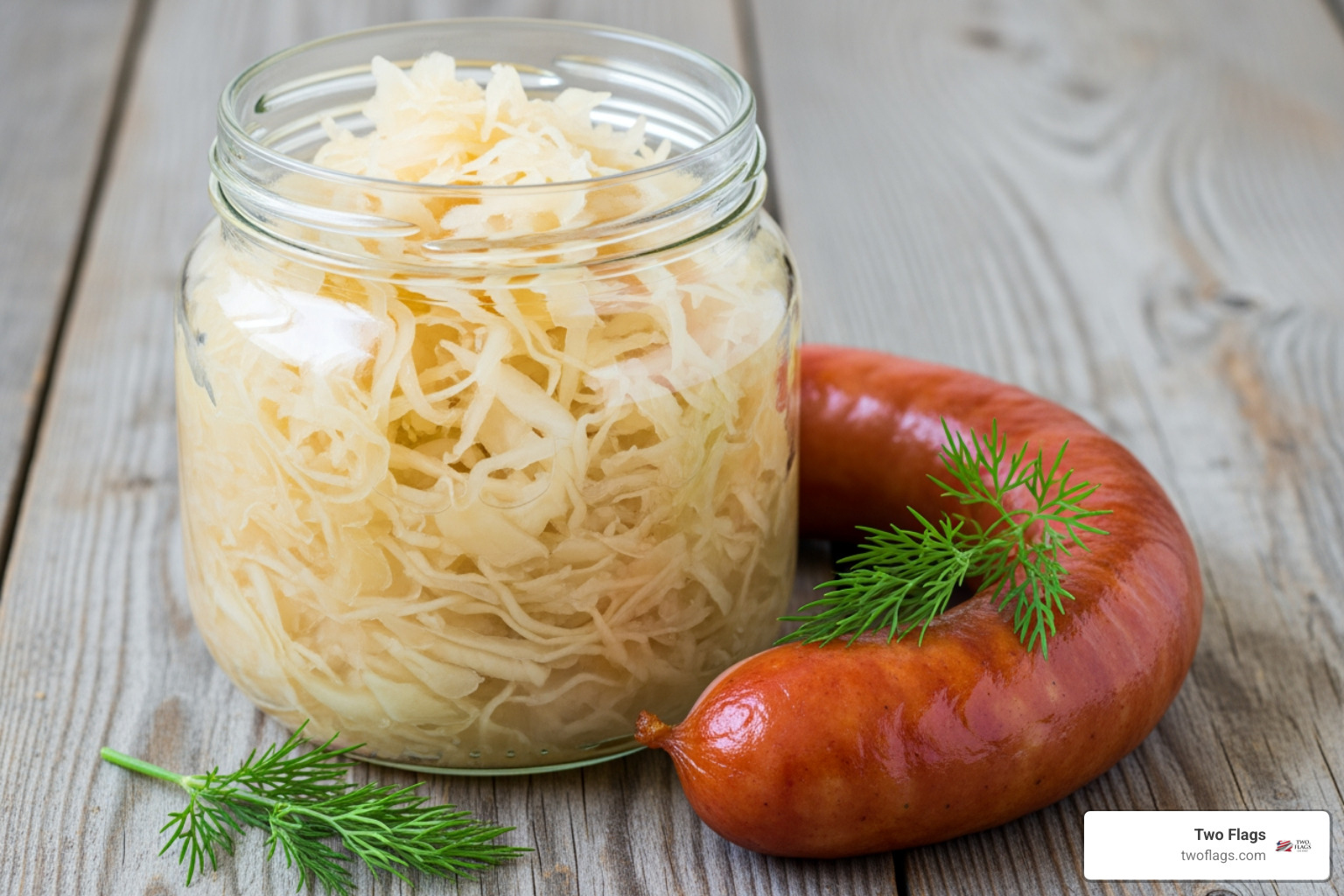
These traditions traveled with Polish immigrants to America, connecting generations across an ocean. Understanding an authentic Polish recipe means understanding this bridge between the old world and the new. From Poland to America: Exploring the Polish-American Experience tells more of this story.
Mastering an authentic Polish recipe: The Stars of the Table
When we talk about the stars of Polish cuisine, a few dishes immediately come to mind. These are the recipes that define the culinary landscape, perfected over generations.
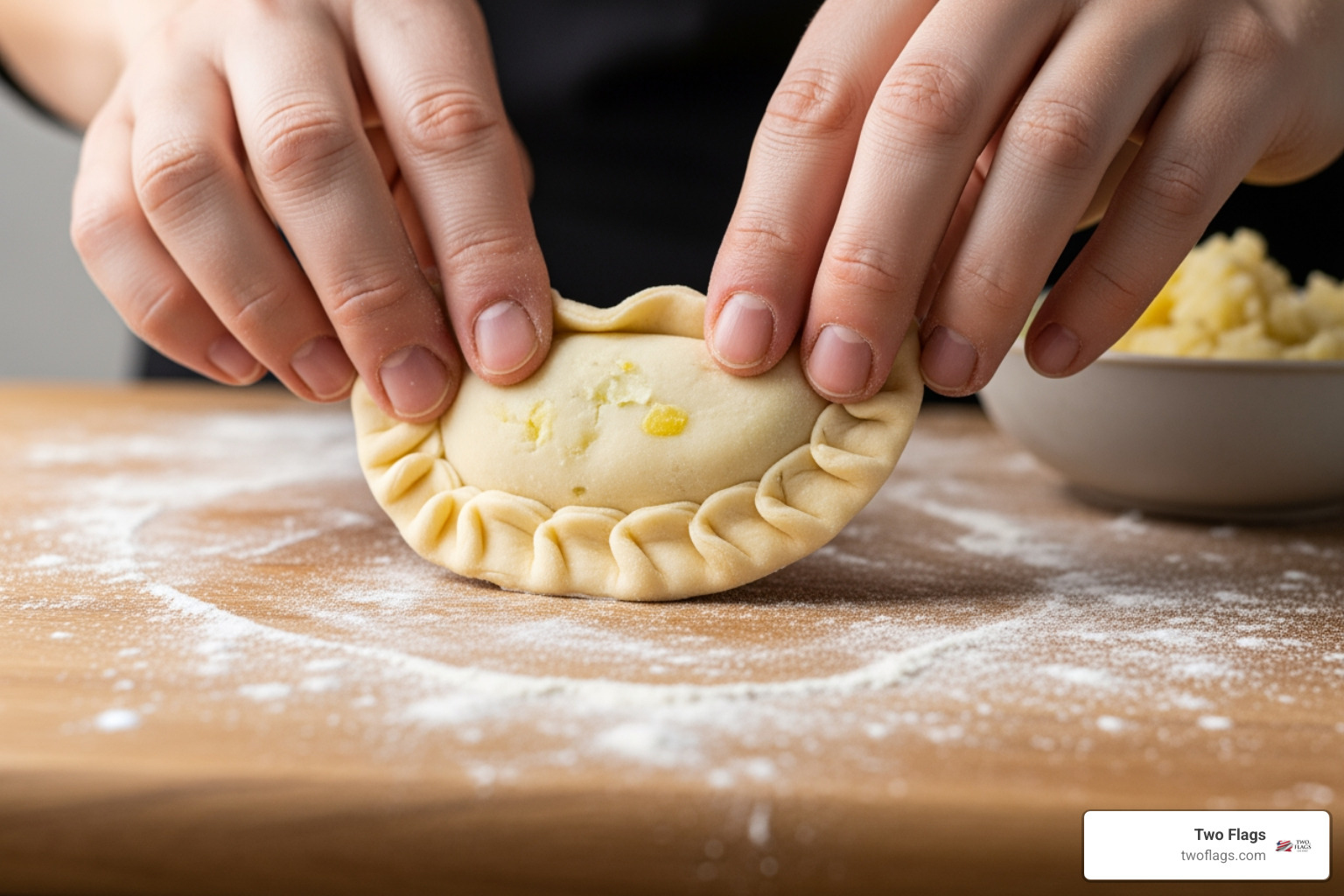
Pierogi: The Ultimate Polish Dumpling
Pierogi are Poland's most iconic comfort food. These versatile dumplings (fun fact: "pierogi" is already plural) can be filled with anything. Popular savory fillings include potato-cheese (Ruskie), sauerkraut and mushroom, or seasoned meat. Sweet versions are often filled with fruit or sweetened cheese.
The secret to a perfect authentic Polish recipe for pierogi dough is using fine flour, adding boiling water for elasticity, and not over-kneading. After resting, the dough is rolled thin, filled, and crimped. Pierogi are boiled until they float, but pan-frying them in butter afterward gives them an irresistible golden, crispy exterior.
Serve them simply, topped with fried onions, crispy bacon bits (skwarki), and a generous dollop of sour cream. For a great starting point, check out A guide to making pierogi.
Bigos: The Legendary Hunter's Stew
Bigos, or "hunter's stew," is Poland's national dish. An authentic Polish recipe for Bigos is a testament to patience, as it's slow-cooked for days to let the complex flavors meld. The stew's base is a blend of tangy sauerkraut and fresh cabbage. A mix of meats like pork, beef, and smoked Polish kielbasa is essential for its hearty character. The real magic comes from adding umami-rich dried mushrooms, sweet prunes to balance the tartness, and aromatic caraway seeds. Bigos famously tastes even better the next day, making it a perfect make-ahead meal. Learn more with this Bigos stew recipe.
Gołąbki: Hearty Cabbage Rolls
Gołąbki, meaning "little pigeons," are tender cabbage leaves wrapped around a comforting filling of ground meat and rice. Preparing the cabbage involves softening the leaves in boiling water for easy rolling. We prefer the stovetop simmering method, where the rolls cook gently in a savory tomato sauce until tender. Layering bacon at the bottom of the pot adds flavor and prevents sticking—a trick from my grandmother. For a detailed guide, see Polish Cabbage Rolls with Tomato Sauce (Gołąbki w sosie pomidorowym).
Kotlet Schabowy: The Perfect Pork Cutlet
Kotlet Schabowy is Poland's delicious take on schnitzel. This quintessential comfort food starts with a boneless pounded pork chop, hammered thin for a tender interior. The pork is then given a classic breading of flour, egg, and breadcrumbs and pan-fried until golden brown and crispy. The contrast between the crispy exterior and juicy inside is what makes it so irresistible. Serve it with creamy mashed potatoes and a refreshing side of Mizeria (cucumber salad) for a perfect meal.
Beyond the Main Course: Soups, Starters, and Sweets
Polish cuisine offers so much more than hearty main dishes. The soups, starters, and desserts complete the authentic dining experience, each bringing its own character to the table.

Essential Soups and Starters
In Polish homes, soups are often the star of the meal.
Żurek (soured rye soup) is perhaps the most uniquely Polish soup. Its tangy flavor comes from zakwas (fermented rye flour), and it's enriched with smoked kielbasa and hard-boiled eggs. It's famously served in a bread bowl during Easter.
Barszcz (beetroot borscht) is another beloved authentic Polish recipe. This vibrant soup's clear version, served with tiny uszka (mushroom dumplings), is a Christmas Eve tradition.
Zupa Ogórkowa (pickle soup) is a surprisingly delicious and comforting soup made with dill pickles, potatoes, and sour cream.
For starters, Mizeria (cucumber salad) is a simple, refreshing dish of thinly sliced cucumbers in sour cream and dill. It's the perfect cooling side for rich dishes like Kotlet Schabowy. Śledź w śmietanie (herring in cream) is a classic holiday starter featuring marinated herring in a creamy sauce with onions.
Beloved Desserts and Baked Goods
Polish desserts are substantial, satisfying treats.
Pączki (Polish doughnuts) are legendary, especially on Fat Thursday. These rich, yeasted doughnuts are deep-fried and filled with rose jam or custard.
Makowiec (poppy seed roll) is a beautiful spiral of yeast dough and a sweet poppy seed filling, often served during Christmas and Easter as a symbol of good luck.
Sernik (cheesecake) is a dense, rich cheesecake made with twaróg (farmer's cheese), giving it a tangier flavor than its American counterpart.
Chrusciki (angel wings) are delicate, crispy ribbons of fried dough dusted with powdered sugar that melt in your mouth.
Here are our Top 5 Polish Desserts You Must Try:
- Pączki – Rich Polish doughnuts filled with rose jam or custard
- Makowiec – Sweet poppy seed roll symbolizing prosperity
- Sernik – Dense, rich Polish cheesecake made with farmer's cheese
- Chrusciki – Crispy "angel wings" dusted with powdered sugar
- Kolachkes – Tender pastries with fruit or sweet cheese fillings
The Polish Dining Experience: Pairings and Presentation
An authentic Polish recipe becomes truly special when you understand how to serve it. In Poland, meals are about gathering together and sharing the joy of good food.
Family-style serving is at the heart of Polish dining, with large platters passed around the table to create a warm, communal atmosphere. Simple garnishes also make a difference: fresh dill, a dollop of sour cream, or crispy fried onions add flavor and visual appeal.
When it comes to food pairings, we keep things classic. Hearty stews like Bigos demand dark rye bread for soaking up the sauce, while Kotlet Schabowy is perfectly matched with mashed potatoes and tangy Mizeria.
Now, let's talk about Polish vodka. For centuries, vodka has been part of Polish dining culture. We enjoy it chilled and sipped neat alongside appetizers like herring or during heartfelt toasts. The clean taste of a quality Polish vodka—like our organic, gluten-free Two Flags One Spirit—beautifully complements rich Polish dishes without overwhelming them. The Spirit of Poland: Unveiling Traditional Vodka explores this cultural connection.
Polish vodka is also versatile in modern cocktails. The Polish Mule, for instance, puts a refreshing spin on a classic. If you're curious about what makes these spirits so special, From Grain to Glass: What Makes Polish Vodka So Special offers insights into the craftsmanship.
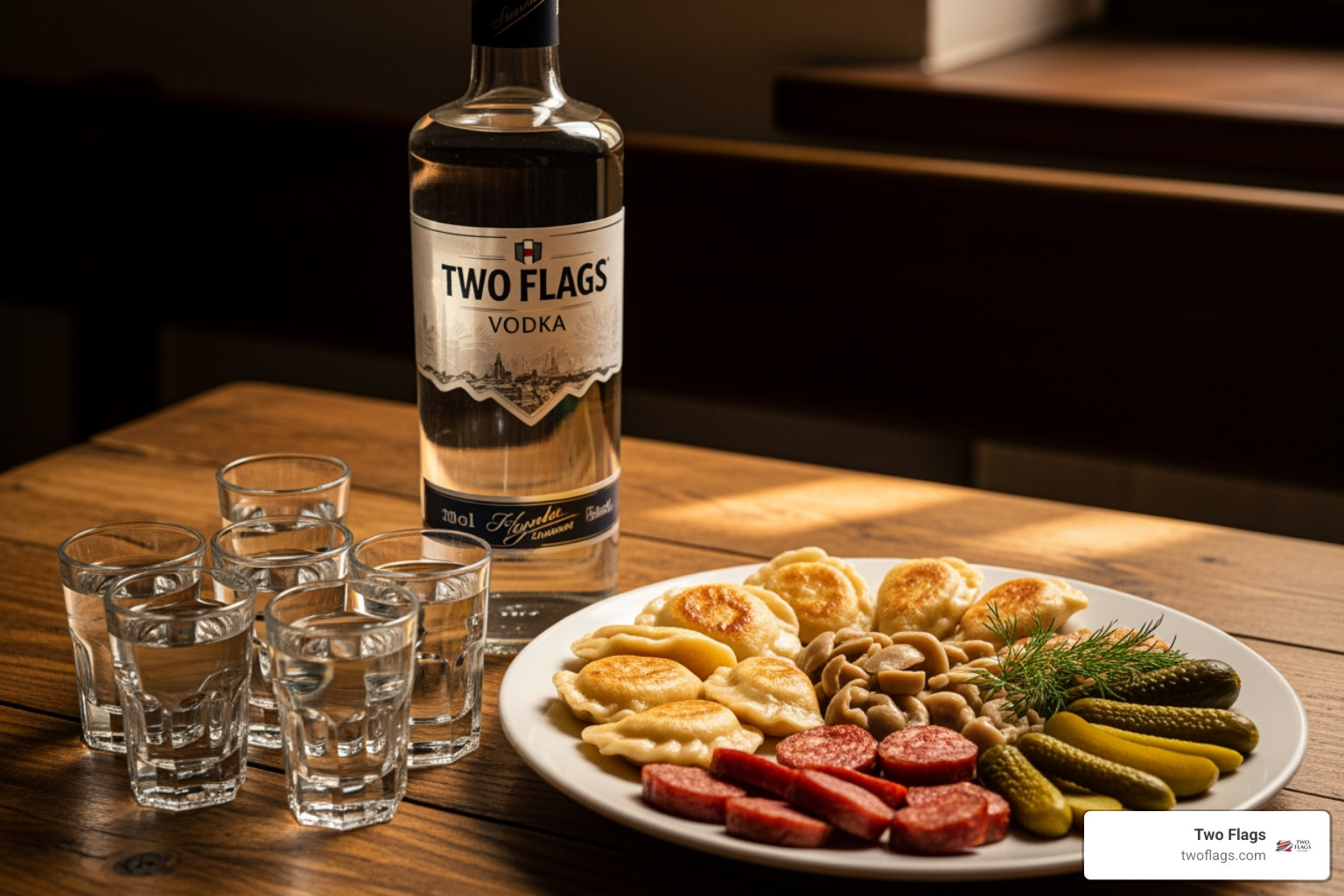
Sharing an authentic Polish recipe is about passing down traditions and creating memories. Whether you're in Arlington Heights, Schaumburg, or anywhere in Chicagoland, these dining traditions can make any meal memorable.
Frequently Asked Questions about Polish Cooking
Here are answers to some common questions about making an authentic Polish recipe, based on our years of experience.
How can I make my pierogi dough not tough?
Getting tender, pliable pierogi dough is achievable. The key is to avoid developing too much gluten, which makes it tough.
- Use fine flour: Low-protein flour like Italian '00' or Polish 'Maka Puszysta' creates a more delicate texture.
- Add boiling water: This technique helps create an elastic, easy-to-work-with dough.
- Don't over-knead: Knead just until the dough comes together smoothly.
- Rest the dough: Let it rest for at least 30 minutes, covered, to relax the gluten. This makes rolling easier.
- Roll it thin: Aim for about 1/8-inch thickness for a delicate, not tough, dumpling.
What is the best way to cook an authentic Polish recipe for Bigos?
The key to a great Bigos is patience. Slow cooking is essential—plan for a gentle simmer of at least 2-6 hours. The long cooking time allows the flavors of the mixed meats, sauerkraut, fresh cabbage, dried mushrooms, and prunes to meld perfectly. And remember, an authentic Polish recipe for Bigos is famously better the next day, as the flavors continue to deepen. This makes it the perfect make-ahead dish for a gathering in Arlington Heights or Schaumburg.
Where can I find ingredients for an authentic Polish recipe?
In Chicagoland, finding authentic ingredients is easy. Here are the best places to look:
- Polish Delicatessens: These are your best resource. Shops in areas like Crystal Lake and Elk Grove Village carry high-quality sauerkraut, genuine smoked kielbasa, dried porcini mushrooms, and farmer's cheese (twaróg). Don't hesitate to ask the knowledgeable staff for recommendations.
- Local Butchers: A good butcher can provide the right cuts of meat for Bigos or Kotlet Schabowy.
- International Markets: Larger grocery stores with international sections are also a good source for specialty flours and pickled goods. If you can't find something, several online retailers specialize in Polish foods.
Conclusion: Your Culinary Journey Begins
We've explored the heart of Polish cooking, from foundational ingredients to iconic dishes like pierogi, Bigos, and Gołąbki. An authentic Polish recipe is more than just instructions; it's a connection to generations of family traditions and a celebration of comfort and flavor.
The beauty of Polish cooking is that it welcomes everyone. You don't need fancy equipment, just patience, good ingredients, and a willingness to let flavors develop. Your first batch of pierogi might not be perfect, but they'll still be delicious. The joy of sharing this food is something truly special.
As you explore these recipes, consider completing the experience with a spirit that honors the same Polish heritage. Our Two Flags Vodka is ultra-premium, organic, and gluten-free, authentically crafted in Poland with the same dedication that goes into every traditional dish. We're proud to bring this taste of Poland to Chicagoland, bridging the two flags of our Polish-American journey. Sip, Savor, and Shop: Discovering the Finest Polish Vodkas will show you where to find us.
Your culinary journey into Polish cooking begins now. Every authentic Polish recipe you create brings this rich tradition to life.
Smacznego! (Bon appétit!)


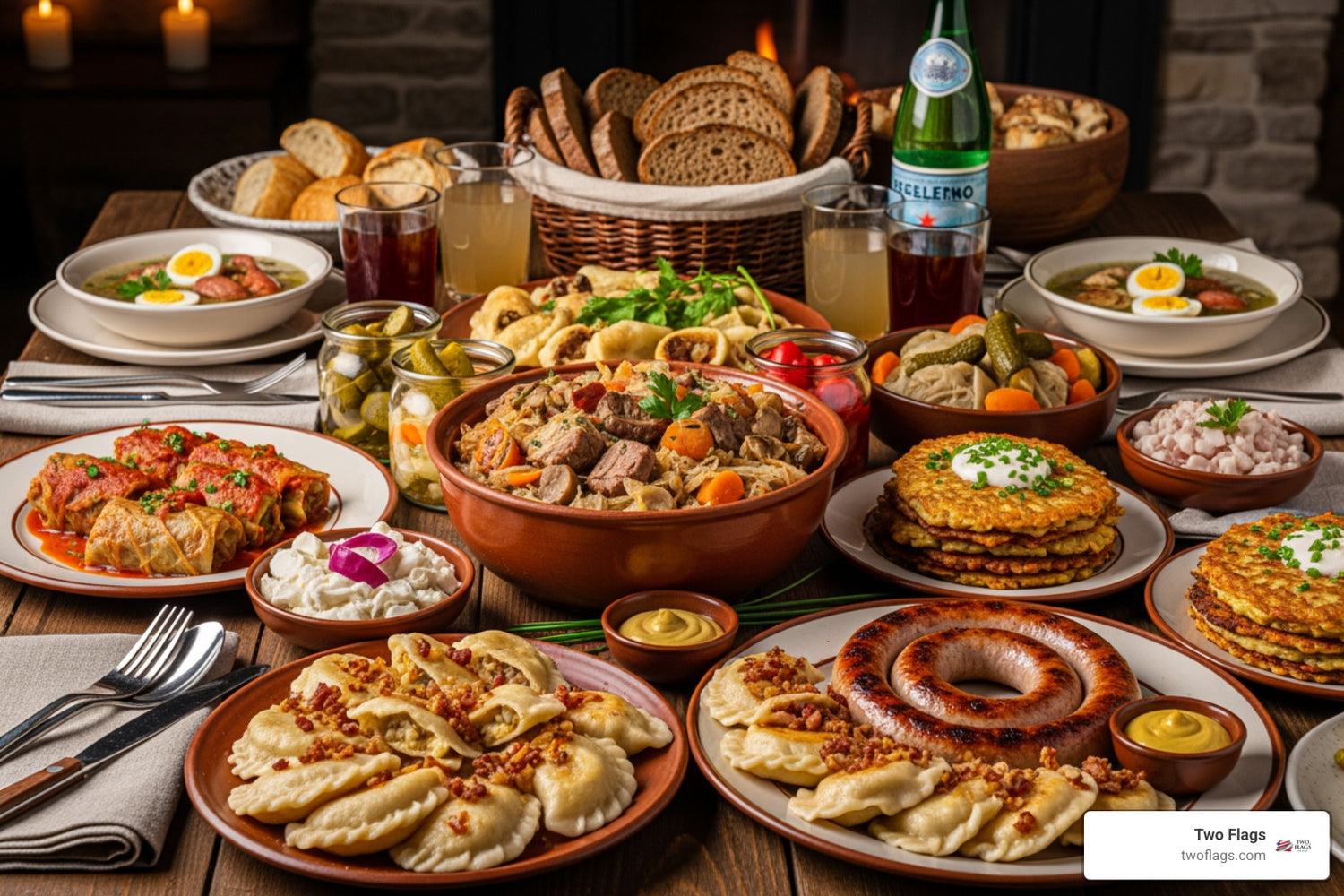



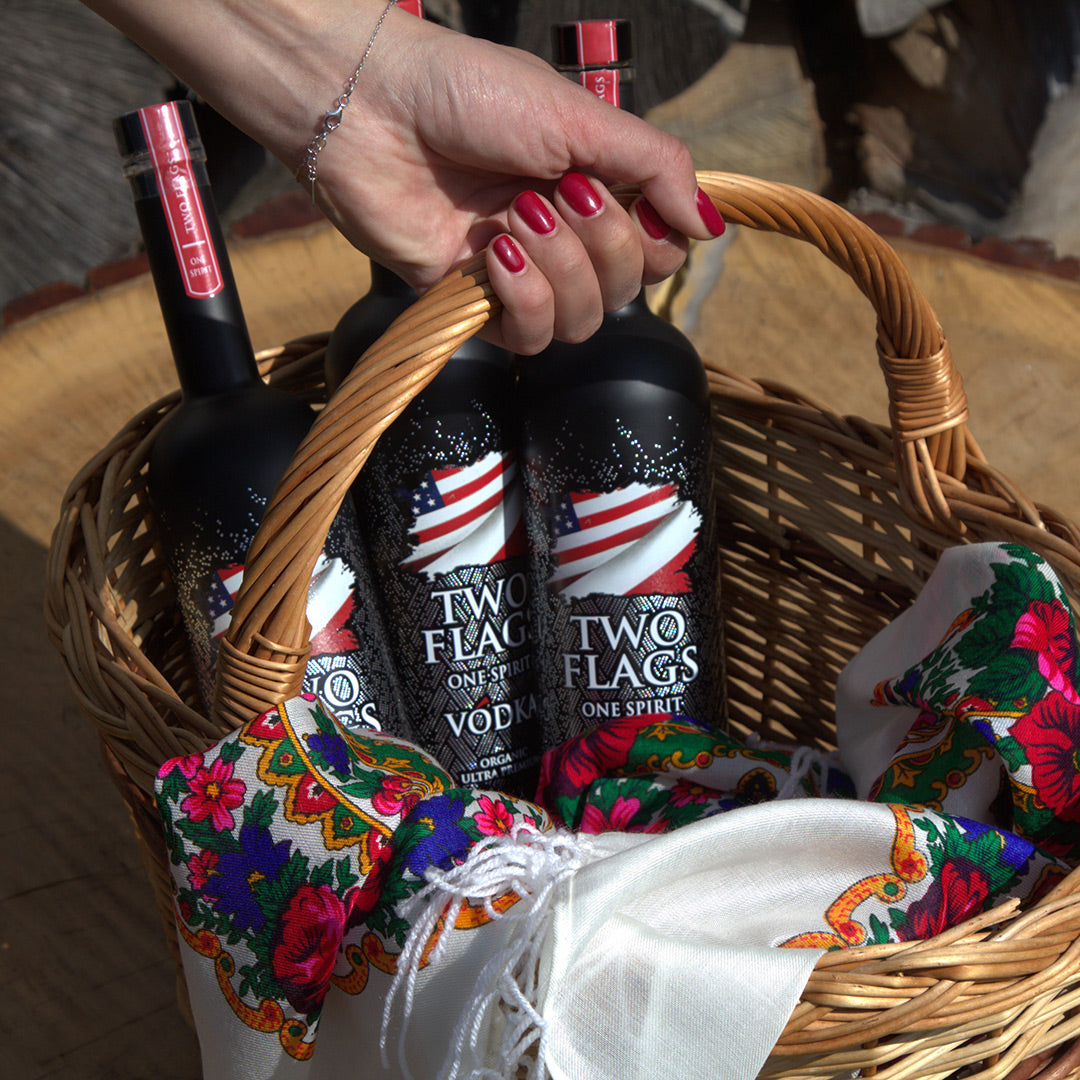

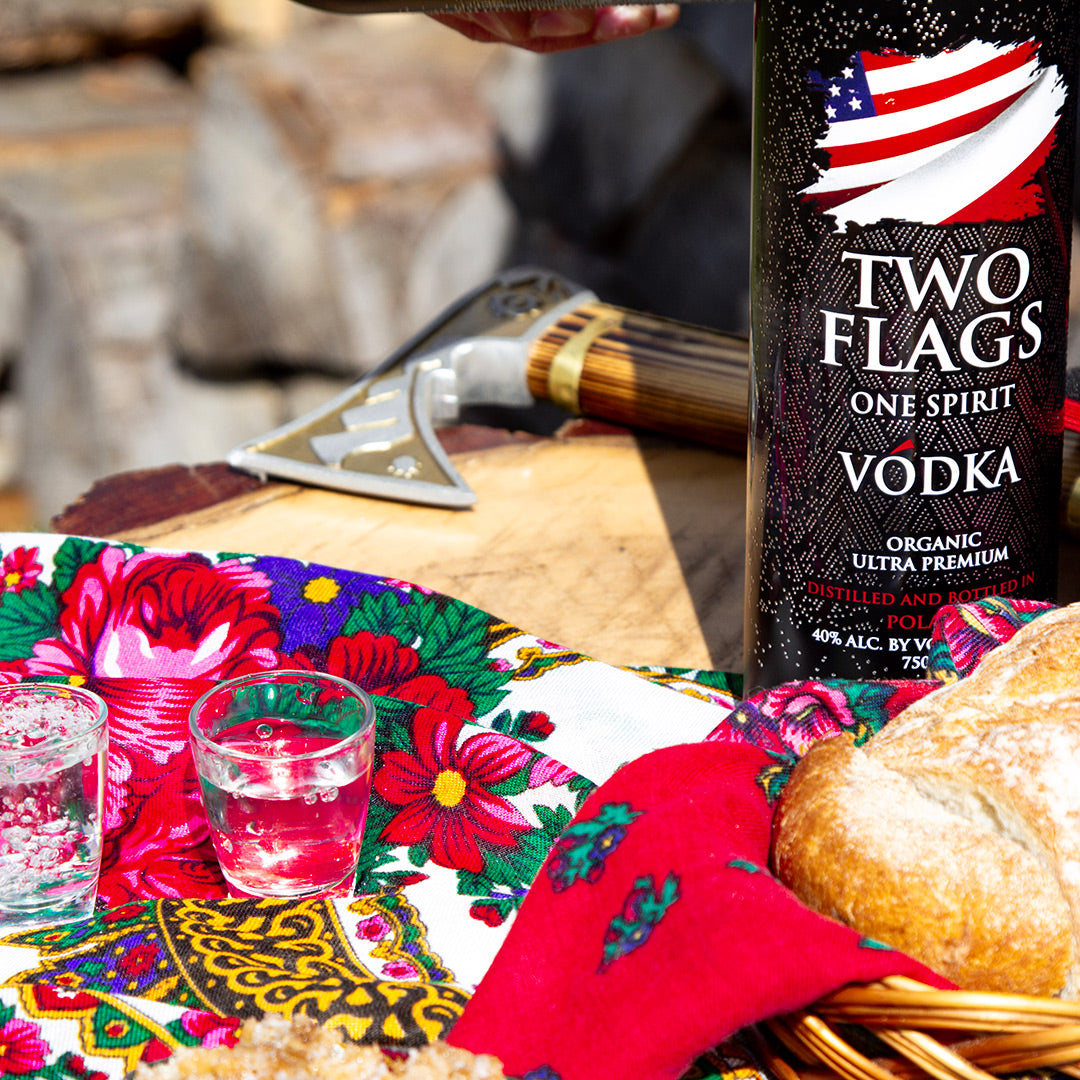

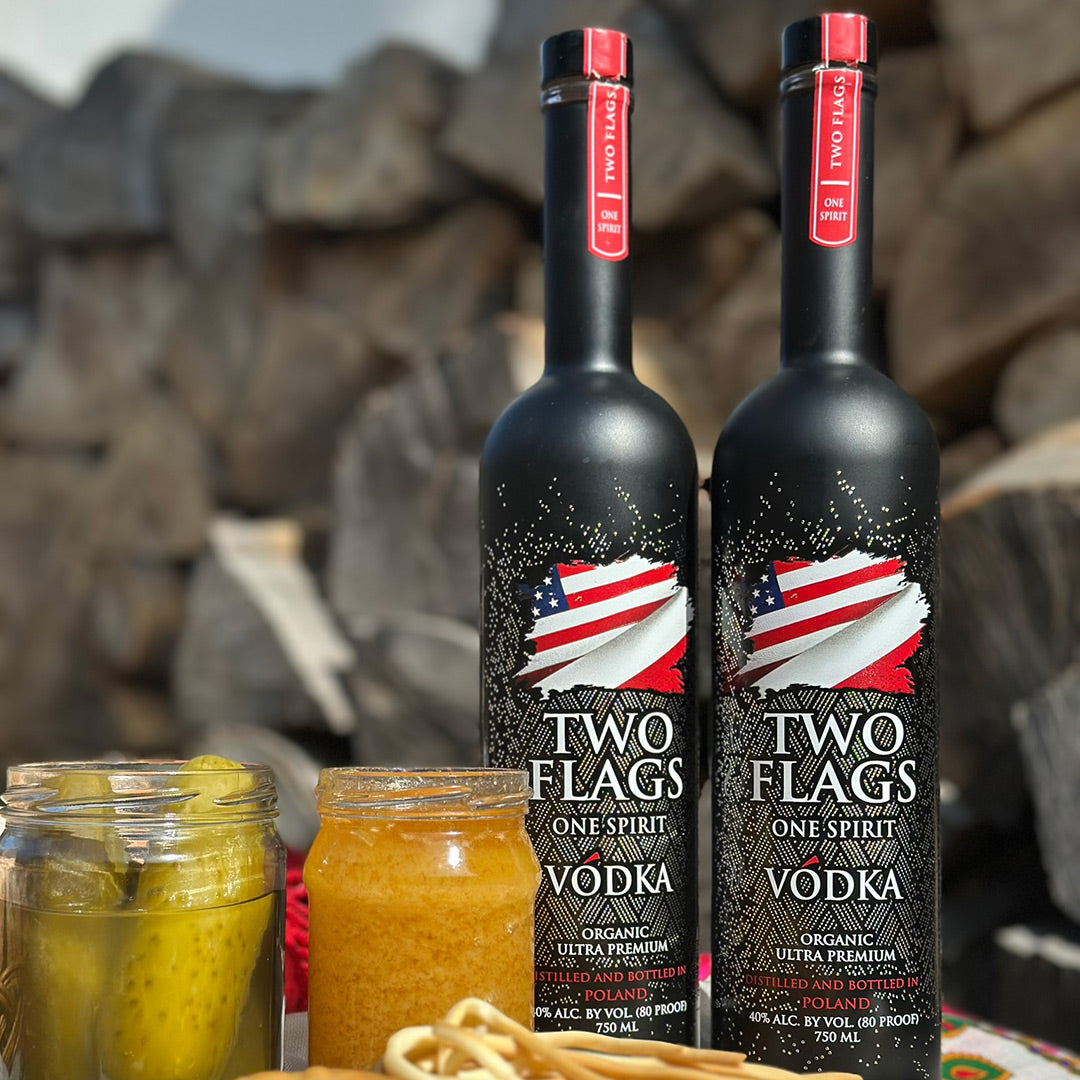
Leave a comment
This site is protected by hCaptcha and the hCaptcha Privacy Policy and Terms of Service apply.